If you are the owner of an RV, then you know how important it is to make sure its roof does not have any holes or leaks. If the roof is leaking, this can cause problems like rotted wood, sagging ceilings and mould growth in both the outside and inside of your RV.
But if you take the right steps and apply some sealant, you can prevent all of these problems from happening.
So don’t worry – get started now and let us help you keep your beloved recreational vehicle safe from any leaks!
Table of Contents
The Importance of RV Sealing
Before you can begin to seal your RV roof, it’s important to understand why sealing is so important. A properly sealed roof will protect you from the elements and keep water and other harmful substances out of your RV.
It also keeps air conditioning and heating costs low by preventing air loss through cracks or holes in the roof. Finally, a properly sealed roof will help prevent the growth of mould and mildew, which can cause serious health issues. [1]
Metal RV Roof
If the roof of your RV is made from metal, then you should use a sealant specifically designed for this type of material. Metal roofs are usually made from aluminium or steel and require special sealants to protect them from corrosion and other damage.
The most popular sealants used on metal roofs include butyl rubber and polyurethane foam.
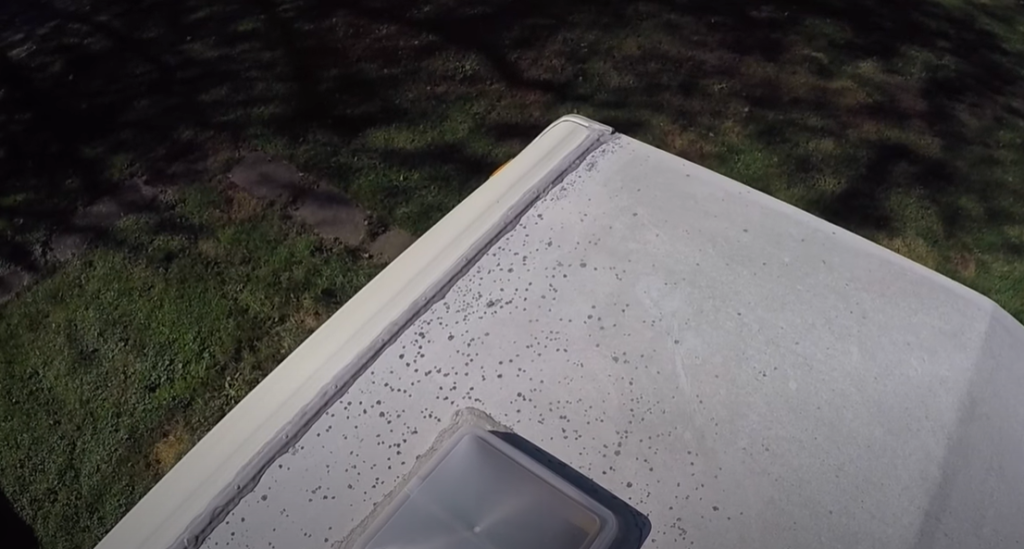
Fibreglass RV Roof
If your RV roof is made from fiberglass, you should use a sealant that is designed for this type of material. Fiberglass roofs often have a coating or sealant to keep them waterproof and prevent damage.
Some of the most popular sealants used on fiberglass roofs are acrylic, butyl rubber and silicone. [2]
Rubber RV Roof
If your RV roof is made from rubber, it’s important to use a sealant specifically designed for this type of material.
Rubber roofs can be either single-ply or multi-ply and need to be sealed with great care. The most popular sealants used on rubber roofs are EPDM and Acrylic Butyl rubber. [1]
RV Roof Sealant: Types and Uses
Self-Levelling RV Roof Sealant
Self-leveling RV roof sealant is a good choice for sealing RV roofs. This type of sealant bonds with the surface and provides a waterproof barrier that prevents moisture from entering your RV.
It also fills in any cracks or holes, so they are not visible. Self-leveling sealants come in both liquid and paste form and work best when applied in generous layers.
Non-Sag RV Sealant
Non-sag RV sealant is a great choice for sealing RV roofs. It is a flexible, rubberized sealant that forms a strong bond with the surface and provides a waterproof barrier that prevents moisture from entering your RV.
Non-Sag sealants are best used on vertical surfaces or places where there is not much movement.
RV Sealant Tape
RV sealant tape is a great type of tape to use to seal the roof of your RV. The tape is weather-resistant and does a great job of protecting against moisture, sun damage, and other elements.
You can apply it easily to different surfaces, and it comes in different widths and lengths.
RV Roof Patch Kit
If you find any holes or cracks in your roof, then it’s best to use an RV roof patch kit. This type of kit contains sealant that is designed specifically for repairing damaged roofs and comes with all the necessary tools to make the job easier. [1]
There are many different types of sealants that can be used to seal your RV roof. Each type has its own unique set of advantages and disadvantages, so it’s important to make sure you choose the right one for your needs.
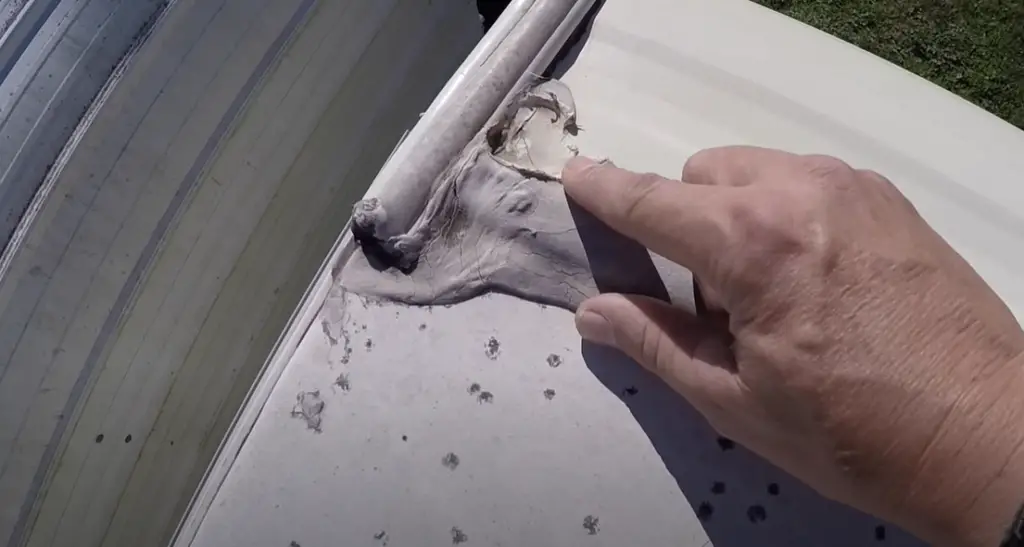
Resealing RV Roof: How To?
Choose Your Timing Wisely
Choose a day that is sunny and warm and make sure you have plenty of time to allow the sealant to dry before any rain or bad weather.
Clean the Area
Before applying the sealant, it’s important to clean the area and remove any dirt, debris or other contaminants. You can do this by wiping down the surface with a damp cloth or using a vacuum cleaner.
Load Caulking Gun
The sealant needs to be loaded into the caulking gun and then applied to the area that needs resealing. Make sure you use a generous amount of sealant so it can properly fill in any cracks or holes.
Cover Well
Once the sealant is applied, cover it well with a piece of plastic or cardboard and wait for it to dry. Depending on the type of sealant you are using, this can take anywhere from 8 to 24 hours.
Patch Holes and Rips
If you need to patch any holes or rips in your RV roof, then you will need to use a patch kit. This type of kit comes with all the necessary tools and sealant to make this task easier.
A Word about RV Roof Coating
RV roof coating is a great way to protect your RV from water damage and other elements. This type of coating can be applied directly to the surface of your RV roof and helps keep it waterproof.
It also provides extra protection against UV rays and helps prevent fading or peeling paint.
Sealing Other Parts and Pieces
In addition to sealing the RV roof, you should also seal any other parts and pieces of your RV. This includes windows, doors, vents, seams, and other areas that need protection from moisture.
Make sure you use a sealant specifically designed for this type of material so it can do its job properly.
It can be difficult to seal an RV roof, but it is important to make sure that it is done right. You can use the best sealants and follow the steps above to make sure your RV roof is sealed properly and will last for a long time.
FAQ
What is the best thing to seal an RV roof?
The best thing to use to seal an RV roof is a non-sag RV sealant. This type of sealant is flexible, rubberized and forms a strong bond with the surface, providing superior waterproof protection.
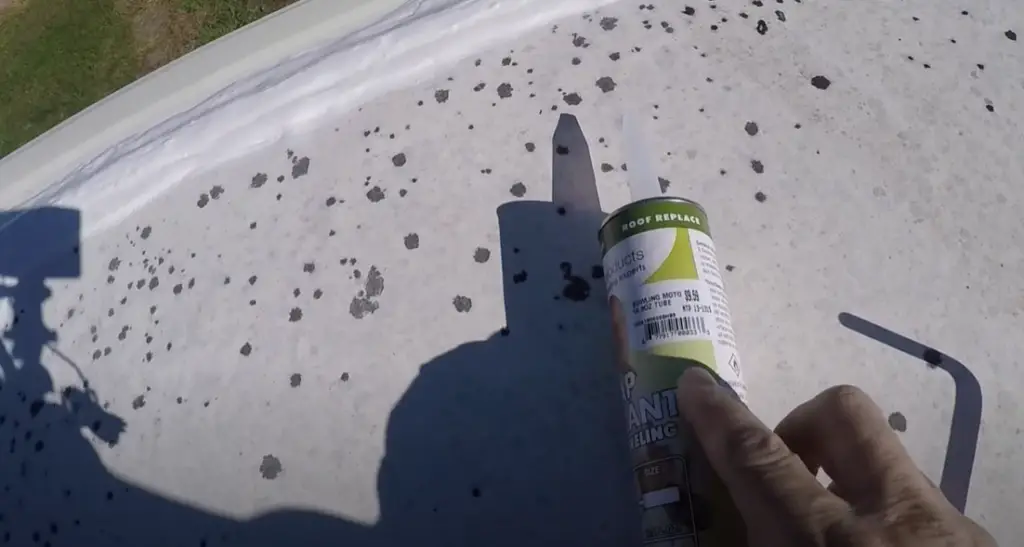
How often should I sell my RV roof?
It’s recommended that you reseal your RV roof every 3-5 years. This will help ensure it is properly sealed and protected from moisture and other elements.
Do I need a special type of sealant to reseal an RV roof?
Yes, you should use a non-sag sealant specifically designed for RV roofs. This type of sealant will form a strong bond with the surface and provide superior waterproof protection.
What other parts of my RV should I seal?
In addition to resealing the roof, you should also seal any windows, doors, vents, seams or other areas that need protection from moisture.
Make sure you use a sealant specifically designed for this type of material so it can do its job properly.
How do you seal a rubber RV roof?
The same steps outlined above can be used to seal a rubber RV roof. The only difference is that you will need to use a special rubber-based sealant instead of a non-sag RV sealant.
Make sure you follow the instructions on the packaging carefully and apply the sealant generously so it can form a good bond with the surface.
Do you need to seal a rubber RV roof?
Yes, it is important to seal a rubber RV roof with a special rubber-based sealant. This type of sealant will form a strong bond with the surface and provide superior waterproof protection.
Make sure you follow the instructions on the packaging carefully and apply the sealant generously so it can fill any cracks or holes properly.
What is the best way to patch a hole in an RV roof?
The best way to patch a hole in an RV roof is with a patch kit. This type of kit comes with all the necessary tools and sealant to make this task easier. Make sure you use a generous amount of sealant so it can properly fill in any cracks or holes.
Allow the sealant to dry completely before walking on the area or adding any additional weight. Following these steps will ensure your patch is properly sealed and secure.
What kind of sealant do you use on an RV?
You should use a non-sag RV sealant to reseal an RV roof. This type of sealant is flexible and rubberized, forming a strong bond with the surface, providing superior waterproof protection.
If you need to patch any holes or cracks, make sure you use a patch kit that comes with all the necessary tools and sealant.
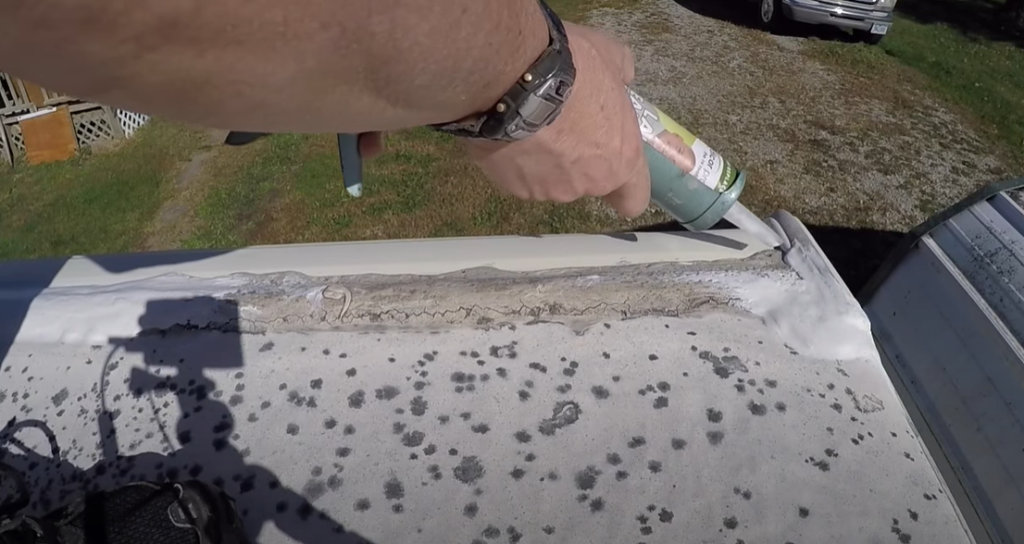
What is the best sealant for a rubber roof camper?
The best sealant for a rubber roof camper is a rubber-based sealant. This type of sealant will form a strong bond with the surface and provide superior waterproof protection.
Do I need to coat my RV roof?
Yes, it is important to coat your RV roof with a sealant in order to keep it properly sealed and protected from moisture and other elements.
Make sure you use the best sealants and follow the steps above to make sure your RV roof is sealed properly and will last for a long time.
What is the best way to clean a RV roof before resealing?
The best way to clean an RV roof before resealing is with a pressure washer. This will help remove any dirt, debris or mildew that has accumulated over time.
Make sure you go over the area at least twice and allow it to completely dry before applying the sealant.
This will help ensure the sealant forms a strong bond with the surface and provides superior waterproof protection.
What else should I do to maintain my RV’s roof?
In addition to cleaning and resealing your RV’s roof, you should also inspect it regularly for any signs of damage or wear.
In particular, look out for cracks, holes, tears or other areas that may need to be patched. If necessary, patch the area with a repair kit and then reseal it with a sealant.
You should also regularly inspect the roof for any signs of moisture or mould, and if necessary, use an appropriate cleaner to remove it.
Finally, make sure you check the seals around your windows, vents and other openings to ensure they are properly sealed. Taking preventative steps like these will help keep your RV’s roof in good condition for years to come.
How often should I reseal my RV’s roof?
It is recommended that you seal your RV’s roof every two to three years. This will help make sure the sealant is still good and working. Inspect the roof regularly for any problems.
If you see any damage, patch it up and reseal it. Doing this will help keep your RV’s roof in good condition and protect it from moisture and other elements.
How long does sealant last on an RV roof?
Sealant typically lasts up to 10 years when properly applied and maintained. Inspect the sealant regularly and reseal it every two to three years as needed.
This will help ensure the sealant is still good and working efficiently. Taking these steps will keep your RV’s roof in good condition for years to come.
Why is it important to reseal an RV roof?
It is important to reseal an RV roof in order to keep it protected from moisture and other elements. The sealant helps form a strong bond with the surface, providing superior waterproof protection.
Regularly inspecting and resealing your RV’s roof will help ensure that it stays in good condition and lasts for a long time.
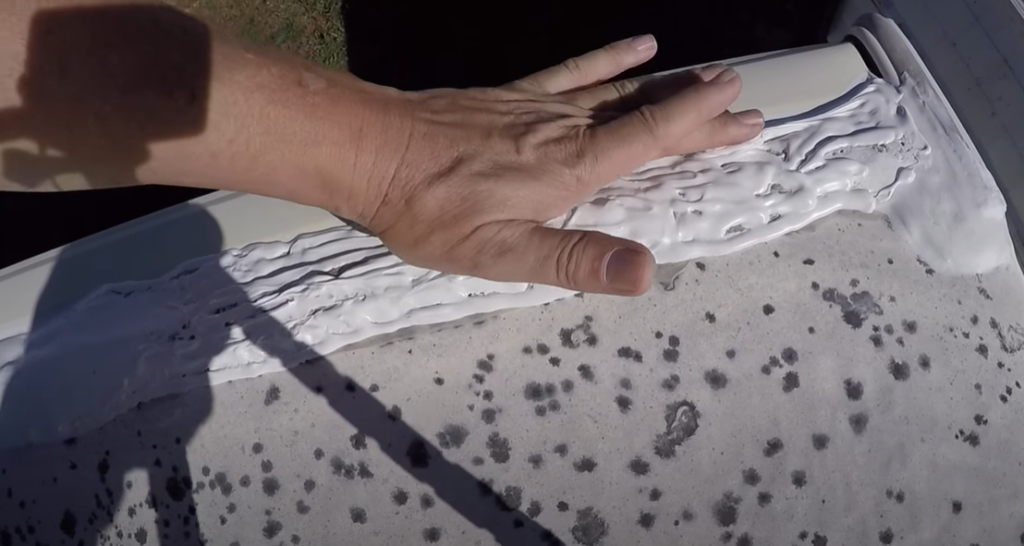
Why is it important to use the right type of sealant?
Using the wrong type of sealant can cause damage to your RV’s roof. Make sure you use a rubber-based sealant specifically designed for RV roofs in order to get the best waterproof protection. This will help ensure that your RV’s roof is properly sealed and will last for a long time.
Does a sealant protect against UV rays?
Yes, a sealant can provide protection from the sun’s ultraviolet (UV) rays. Make sure you use a sealant that is rated for this purpose in order to get the best protection.
Applying a UV-resistant sealant will help keep your RV’s roof in good condition and prevent it from fading or cracking due to prolonged exposure to the sun.
Do I need to apply multiple coats of sealant?
It is recommended that you apply two or three coats of sealant to get the best waterproof protection. Make sure you allow each coat to dry completely before applying the next one.
This will help ensure a strong bond between each layer and provide superior waterproof protection for your RV’s roof.
Does applying sealant to an RV roof require special tools?
No, applying sealant to your RV’s roof does not typically require any special tools. You simply need a clean cloth and a paint roller or brush to apply the sealant evenly.
Make sure you read the instructions on the sealant package before using it as some products may require additional preparation or tools.
Do I need to recoat the sealant regularly?
No, once you have applied the sealant and it has had enough time to cure, you do not need to recoat it.
However, you should inspect your RV’s roof every two to three years and reseal any areas that may need it. Doing this will help ensure that the sealant is still good and working efficiently.
Can an RV roof be sealed without professional help?
Yes, an RV roof can be sealed without professional help. However, it is important to make sure you use the right type of sealant and apply it properly in order to get the best protection.
If you are not comfortable doing this yourself, it is recommended that you seek professional assistance.
Can sealant be applied over existing sealant?
Yes, you can apply new sealant over existing sealant. However, it is important to make sure the old sealant is still in good condition and not cracked or damaged.
If so, you should remove the old sealant before applying a new coat. This will help ensure that your RV’s roof is well-protected from moisture and other elements.
Can sealant be used on metal RV roofs?
Yes, sealant can be used on metal RV roofs. Make sure you use a rubber-based sealant specifically designed for this purpose in order to get the best protection.
Applying a metal sealant will help keep your RV’s roof in good condition and prevent it from rusting or corroding due to prolonged exposure to the elements.
Should I remove any existing sealant before applying a new coat?
Yes, you should remove any existing sealant before applying a new coat. This will help ensure that the surface is clean and free of dirt or debris which can affect how well the sealant bonds with the RV’s roof.
Using a wire brush to scrub away old sealant is an effective way to prepare the surface for a new layer of sealant.
Which sealant is best for sealing an RV roof?
The best sealant to use for sealing an RV roof is a rubber-based sealant that is specifically designed for this purpose. This type of sealant will provide the best waterproof protection and will last longer than other types of sealants.
Make sure you read the instructions on the package so that you know how to use it correctly.
Can I paint over sealant?
Yes, you can paint over sealant but it is important to make sure the sealant is completely cured and dry before doing so. This will help ensure that the paint adheres properly and does not peel or flake off due to moisture or other elements.
It is also important to use a paint that is designed for exterior use in order to get the best protection against UV rays, moisture and other elements.
Can I use a sealant on a rubber roof?
Yes, you can use a sealant on a rubber roof. Make sure you use one specifically designed for this purpose in order to get the best protection and ensure that it lasts longer.
Apply multiple coats of the sealant for added durability and be sure to read the instructions on the package so that you know how to use it correctly.
Can I seal an RV roof myself?
Yes, you can seal an RV roof yourself. However, it is important to make sure you use the right type of sealant and apply it properly in order to get the best protection.
If you are not comfortable doing this yourself, it is recommended that you seek professional assistance.
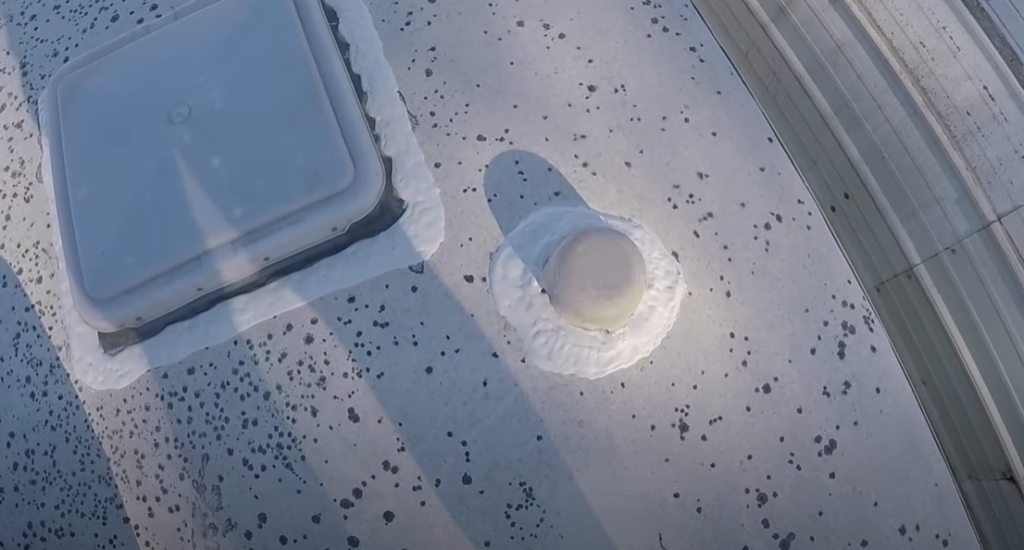
When should I reseal my RV’s roof?
You should inspect your RV’s roof every two to three years and reseal any areas that may need it. Doing this will help ensure that the sealant is still good and working efficiently.
If you are applying a silicone or rubber-based sealant, make sure it has had enough time to cure before you inspect it. Also, be sure to read the instructions on the package so that you know how to use it correctly.
Why is it important to seal an RV roof?
Sealing an RV roof is essential for keeping your RV in good condition and preventing water or moisture from entering the interior. It also helps protect against UV rays, extreme temperatures, and other elements that can cause damage over time.
Applying a sealant will ensure that your RV’s roof has maximum protection and that it lasts longer.
What are the steps for sealing an RV roof?
The steps for sealing an RV roof are as follows:
- Clean the surface of the roof thoroughly to make sure there is no dirt or debris that will affect how well the sealant bonds.
- Use a wire brush to scrub away any existing sealant on the surface.
- Apply a rubber-based sealant that is specifically designed for this purpose.
- Use a roller or brush to spread the sealant evenly and make sure it covers the entire surface of the roof.
- Allow the sealant to cure for 24 hours before inspecting it.
- Inspect the surface of the roof after 24 hours and reapply if necessary.
- Once you are satisfied with the coverage, paint over the sealant for extra protection (if desired).
Is there any maintenance required with a sealed RV roof?
Yes, it is important to inspect the sealant on your RV’s roof regularly and repair or replace it as needed. This will help ensure that the sealant remains in good condition and provides maximum protection against water or moisture entering the interior.
It is also recommended to use a paint designed for exterior use over the sealant in order to get the best protection against UV rays and other elements.
Useful Video: Seal Your RV Roof For Life
Conclusion
RV roof sealant is an important part of maintaining your recreational vehicle. By regularly inspecting and sealing your roof, you can extend the life of your RV and avoid costly repairs.
With these tips in mind, you can keep your RV in top condition for years to come. Do you have any other tips for keeping an RV roof in good condition? Share them with us in the comments below!
References:
- https://www.fulltimefamilies.com/sealing-an-rv/
- https://campersmarts.com/how-to-seal-rv-roof

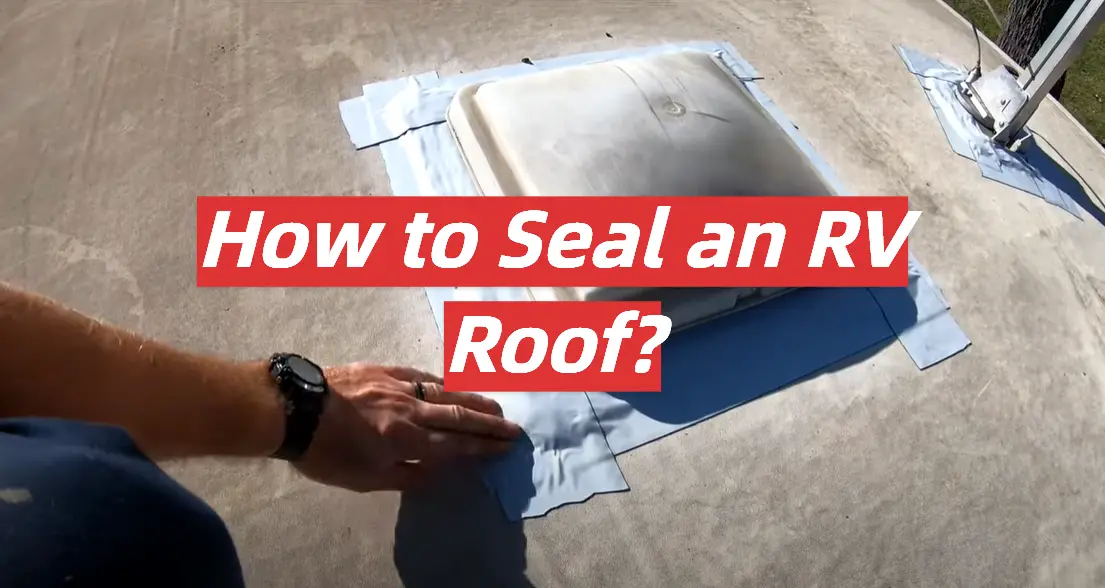
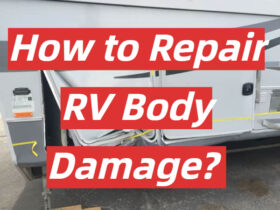
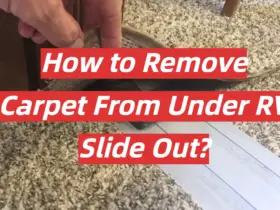
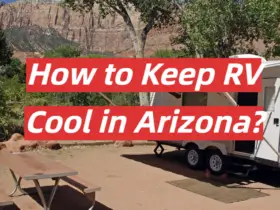
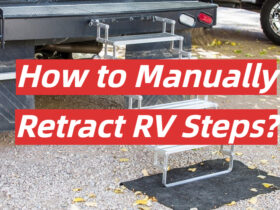
Leave a Reply